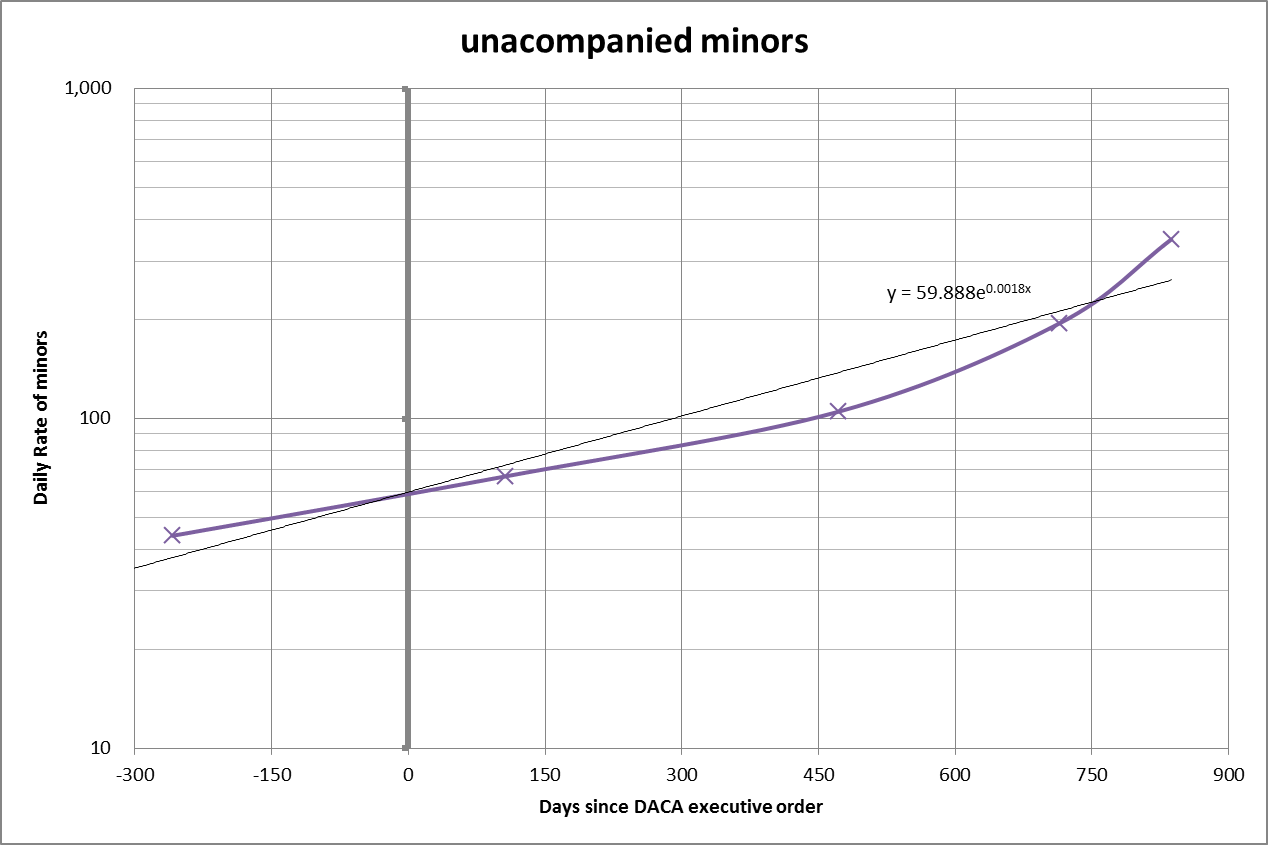Surge
Is the surge of illegal child immigrants a national security threat? - CBS News
Rate of Illegal Unaccompanied Minors Explodes after DACA
 |
| Exploding rate of Unaccompanied Minors jumps from 60 to >200 per day |
Mexico: Law And Disorder
July 10, 2014: In the northeast (Tamaulipas state) police raided a location where 165 people from Cuba, Honduras, and El Salvador were being held captive by people smugglers who were demanding more money to get them into the United States. Such double dealing is common on the border, especially with non-Mexican migrants seeking someone who will get them across the border for a fee. Three of the kidnappers were arrested and the hostages said that one couple and their child had already been killed when they were unable to get anyone to produce more money for them.
Warning Signs: Mexico is Deliberately Aiding Illegal Aliens
Cause and Effect
The countries where these unaccompanied minors appear to come from have not suddenly changed, and the pressure to emigrate has been building for some time. DACA basically opened the safety valve on the pressure cooker.Obama’s Immigration Policy: Identify The Problem And Do Nothing | The Daily Caller
President Obama did get something right about the current
immigrations crisis. The root of the problem is not in the United
States, it is the miserable social and economic conditions in Guatemala,
El Salvador and Honduras. And, true to form, the Obama administration
has completely ignored the root problem – that is until it became a
political problem.
The statistics tell the tale. Guatemala, El Salvador and
Honduras are the poorest countries in the continental western hemisphere
with per capita incomes of less than $8,000 each (at purchasing power
parity) according to
the World Bank. Honduras’ per capita income is only $4,591. With the
exception of Nicaragua, all are much poorer than their neighbors (Mexico
has a per capita income of $16,463). Homicide rates are even worse,
with Honduras suffering a rate of 90 per 100,000. Guatemala and El
Salvador have rates
of 40 and 41, more than triple Costa Rica and Nicaragua. By comparison,
Mexico has a murder rate of 22 and the United States only 5.
The distribution of income in Central America
Latin America has the sad reputation of being one of the
most unequal regions in the world. All Latin American countries exhibit levels
of income inequality that exceed the average of each of the regions of the world
except sub-Saharan Africa, and 10 Latin American countries are among the 15
most unequal in the world (CEPAL 2011; Gasparini and Lustig 2011). The Central
American countries reproduce the high levels of inequality in the region. Medina
and Galvan (2008) use the statistical technique of optimum stratification to
classify Latin American countries into groups according to their Gini index of
per capita family income (for around 2005). Costa Rica and El Salvador are
located, along with Uruguay, among the countries with the lowest inequality in
Latin America. At the other extreme, Guatemala and Honduras are located among the
Latin American countries with the highest levels of inequality.
We document changes in income and earnings inequality in the five Central American countries from the early 1990 s to 2009. In the 1990s Costa Rica had the most equal distribution of income in Central America, and one of the most equal distributions of income in Latin America. At the other extreme, Guatemala, Honduras and Nicaragua were among the most unequal countries in Latin America. Inequality in El Salvador was between these extremes. Then, in the first decade of the 21st century inequality in El Salvador and Nicaragua decreased while inequality in Costa Rica , Guatemala and Honduras increased. By 2009 levels of inequality in El Salvador and Nicaragua were similar to those in Costa Rica. In this paper, we examine why income and earning inequality differs between the five Central American countries, and why inequality decreased in El Salvador and Nicaragua but increased in Costa Rica, Guatemala and Honduras .
DACA
Deferred Action for Childhood Arrivals - Wikipedia, the free encyclopediaDeferred Action for Childhood Arrivals (“DACA”) is a memorandum authored by the Obama administration on June 15, 2012. It was implemented by the Secretary of the Department of Homeland Security, Janet Napolitano. It directs U.S. Customs and Border Protection (CBP), U.S. Citizenship and Immigration Services (USCIS), and U.S. Immigration and Customs Enforcement (ICE) to practice prosecutorial discretion towards some individuals who immigrated to the United States as children and are currently in the country illegally.
A grant of deferred removal action does not confer lawful immigration status, alter an individual’s existing immigration status, or provide a path to citizenship.
No comments:
Post a Comment